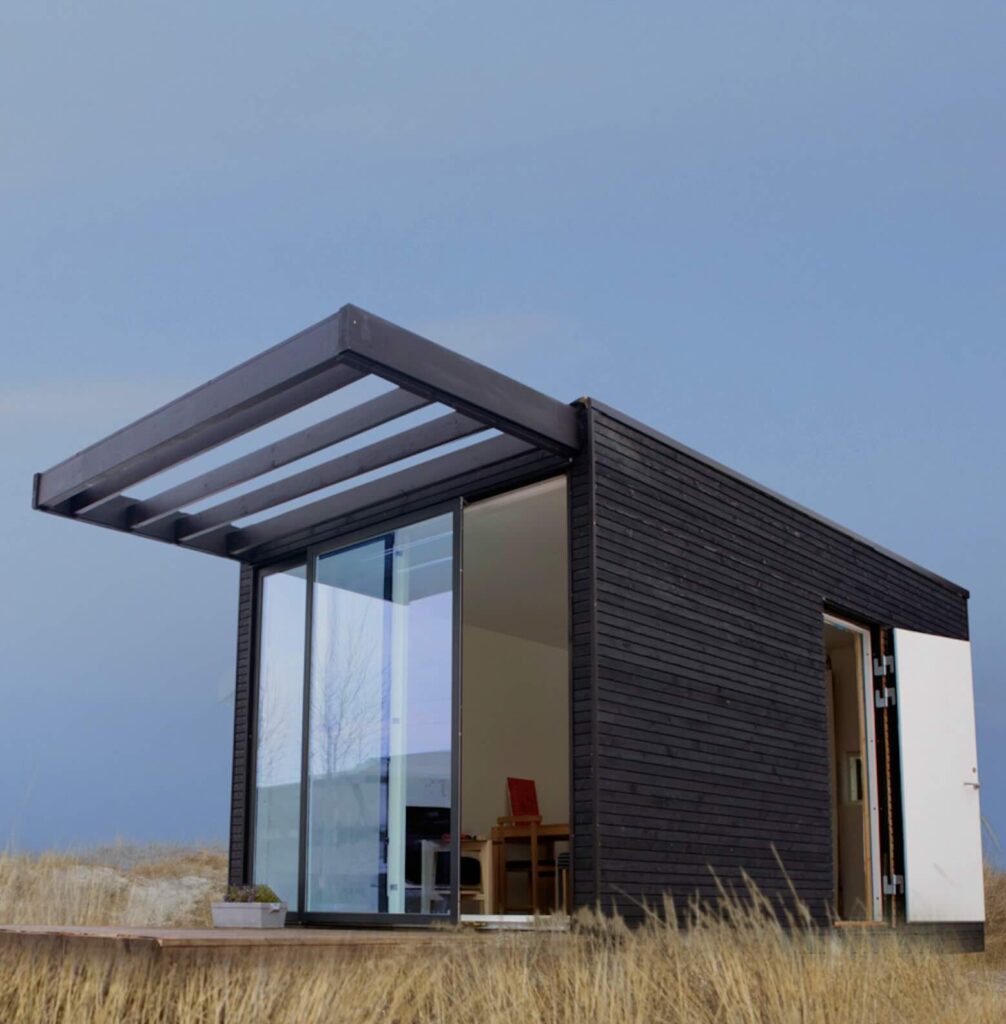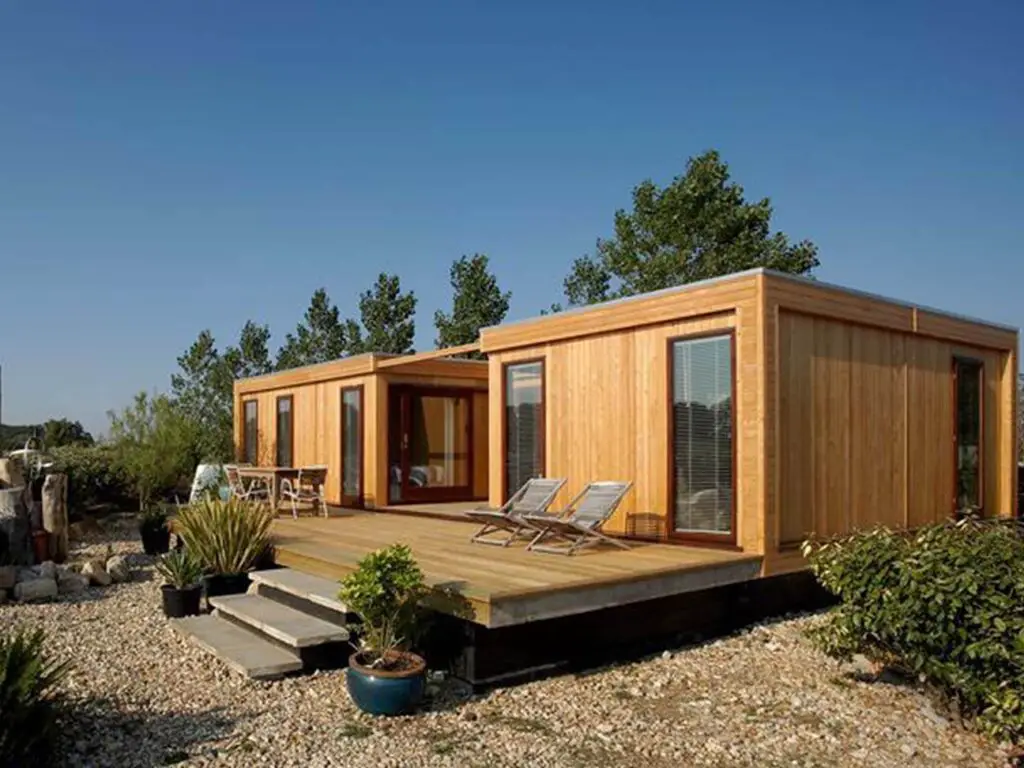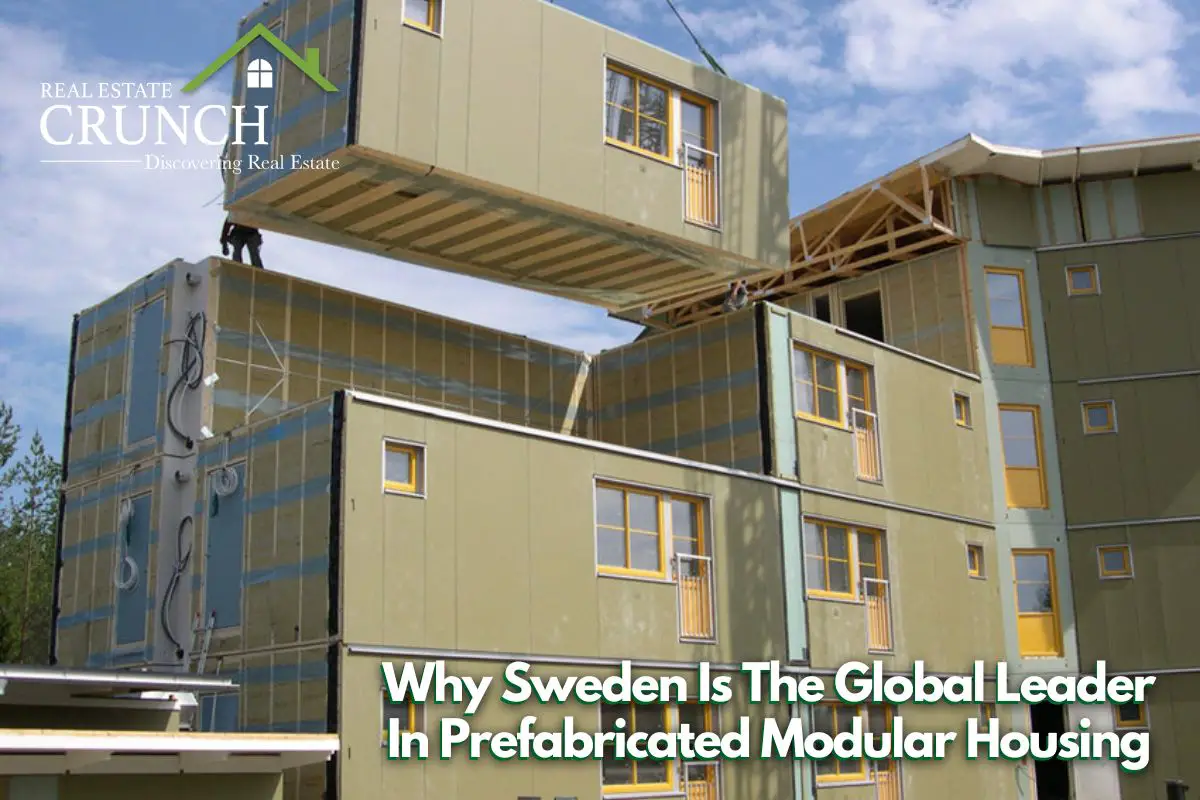Sweden has been the birthplace of iconic global brands such as IKEA, Ericsson, Volvo, and Spotify, each synonymous with innovation and quality. Adding to these prestigious ranks, Sweden now leads the world in modular or prefabricated housing.
More than 80% of all new constructions in Sweden are prefabricated homes built largely off-site and then assembled on-site—a stark contrast to the modular housing scene in the United States, which continues to struggle with scaling operations efficiently. This leadership stems from years of refining techniques and pioneering advancements in the prefab industry, positioning Sweden at the forefront of this growing sector.
Table of Contents
- 11 Reasons Why Sweden Leads The World In Modular Housing
- 1. Advanced Manufacturing Technologies
- 2. Wood-Based Construction
- 3. Pre-Cut Precision Components
- 4. Upgraded Worker Skills
- 5. Widespread Adoption
- 6. Innovative Design And Planning Software
- 7. Integrated Team Approach
- 8. Economies Of Scale In Production
- 9. Learning And Adapting from Global Practices
- 10. Commitment To Sustainability
- 11. Embraces Lean Manufacturing
- My Passion For The Modular And Prefab Housing Industry
- Related Questions
11 Reasons Why Sweden Leads The World In Modular Housing
Sweden has carved out a niche as the global frontrunner in modular housing, a sector characterized by the innovative use of technology and sustainable practices. This Scandinavian nation harnesses advanced technology and a well-integrated system from design through to construction, setting a benchmark in the prefab housing industry.
Here are eleven reasons why Sweden stands at the forefront of this transformative industry.
1. Advanced Manufacturing Technologies
Sweden employs sophisticated machinery and equipment in the production of modular homes, utilizing high levels of automation, including robotic technology for precision tasks like lifting and using nail guns. This minimizes the need for manual labor, significantly reducing manufacturing costs.
2. Wood-Based Construction
Emulating traditional construction, Swedish modular homes are predominantly made from wood, combining classic appeal with modern efficiency. This approach not only leverages Sweden’s abundant forestry resources but also promotes sustainability.
3. Pre-Cut Precision Components
Components used in Swedish modular homes are pre-cut to exact specifications, ensuring a perfect fit and eliminating on-site waste like sawdust. This precision supports the use of high-tech machinery and contributes to cleaner, more efficient factory environments.

4. Upgraded Worker Skills
The shift toward factory-based home construction in Sweden has led to a workforce skilled in both traditional construction techniques and modern technology. Workers have adapted to handle sophisticated machinery and data management, elevating the overall craftsmanship and innovation in the modular housing sector.
5. Widespread Adoption
Modular homes are embraced by a large segment of the Swedish population, favored for their cost-effectiveness and reduced build times. Currently, 80% of all new home constructions in Sweden are modular, reflecting the method’s popularity and effectiveness.
6. Innovative Design And Planning Software
Swedish builders utilize advanced CAD software, such as Vertex, to design modular homes. This software enables detailed 3D modeling and precise planning of every aspect of a home, from individual nails to structural elements, which machines then use to automate construction.
7. Integrated Team Approach
In Sweden, the design, data analysis, and production teams collaborate closely to ensure that modular homes meet strict specifications. This integrated approach involves architects, designers, and engineers from the initial stages, facilitating a seamless transition from design to reality.
8. Economies Of Scale In Production
Swedish companies continue to refine their manufacturing processes, achieving economies of scale that reduce costs and enhance efficiency. This ongoing improvement supports higher production rates without compromising quality.

9. Learning And Adapting from Global Practices
While the concept of off-site construction was initially more prevalent in the United States, Sweden has not only adopted it but has excelled by integrating robust technology and streamlined processes. This adaptability has set Sweden apart as a leader in the industry.
10. Commitment To Sustainability
The Swedish modular housing market is deeply committed to environmental sustainability, which is reflected in their choice of materials and methods. The use of wood from responsibly managed forests, along with efficient manufacturing that reduces waste, underscores Sweden’s dedication to green building practices.
11. Embraces Lean Manufacturing
Swedish modular home companies benefit immensely from the country’s strong legacy in lean manufacturing principles, exemplified by major corporations like Volvo. These principles focus on maximizing efficiency and minimizing waste throughout the production process, ideals that are central to the success of prefab housing in Sweden
These eleven factors demonstrate why Sweden is not just participating in the global shift towards modular housing but is leading it. The country’s approach integrates technology, sustainability, and efficient practices, making Swedish modular homes a model for future developments worldwide.
With ongoing advancements and a strong market acceptance, Sweden’s leadership in this field is set to continue growing, influencing other nations and shaping the future of residential construction.
My Passion For The Modular And Prefab Housing Industry
Having spent the majority of my career in manufacturing, my appreciation for the modular and prefabricated housing industry runs deep. This field combines efficiency with innovation, revolutionizing the traditional construction process through advanced manufacturing techniques primarily in a factory setting before assembly at the site.

8 Reasons Why I Advocate For Modular Housing
Efficiency In Production:
Traditional on-site building methods are becoming outdated, especially when it comes to scaling operations for single-family homes. Modular housing, fabricated in a controlled factory environment, streamlines the building process, reduces waste, and significantly cuts down construction time.
Economic Advantages:
The economies of scale possible in factory settings cannot be matched by traditional construction methods. Large-scale production minimizes costs while maximizing output, making housing more accessible and affordable.
Technological Integration:
Sweden, a pioneer in embracing and refining prefab construction technologies, demonstrates the vast potential of integrating technology with housing. Swedish factories not only meet but exceed building standards, setting a global benchmark in prefab housing.
Regulatory Compliance:
These homes are constructed to adhere strictly to building codes, which are often more rigorously applied in a factory setting than in traditional construction. This meticulous compliance ensures higher standards of safety and quality.
Education And Skill Development:
The shift towards prefab housing requires a corresponding evolution in the construction education sector. Current and future professionals need to be well-versed not only in traditional construction skills but also in automation, logistics, and computer-aided design (CAD).
Sustainability:
Modular homes are generally more environmentally friendly than traditional builds. The controlled environment reduces waste, and the efficiency of the process lowers the carbon footprint associated with construction.
Global Influence And Adaptation:
Countries lagging behind in prefab housing, like the United States, must adapt to keep up with leaders like Sweden. This adaptation will involve not only embracing new technologies but also overhauling educational curricula to include modern construction methodologies.
The Future Of Construction:
As we move forward, the integration of logistics, technology, and traditional building skills will become more intertwined. Modular construction isn’t just about replacing hammers with robots; it’s about a holistic approach to building that incorporates various disciplines.

My love for the modular and prefab housing industry is rooted in its ability to innovate and improve upon traditional construction methods. This industry does not merely represent a shift in how we build homes—it signifies a step towards more sustainable, efficient, and quality construction practices that will benefit not just individual countries but the global community.
The potential for growth and improvement makes this field not only exciting but also essential for the future of construction.
Real Estate Crunch gives you real property and real estate information and advice. We offer a free monthly newsletter; you can sign up for our newsletter by clicking here.
We also have a weekly podcast called “Real Estate Crunch,” found on all major podcast platforms. Listen to our podcast by clicking here.
Follow us on our social media platforms – Facebook and Instagram.
Related Questions
What Does EMV Mean In Home Foreclosure Listings?
The term EMV means the Estimated Market Value. It is the estimated value that is placed on a home that has been foreclosed. The bank will usually check with several sources to determine what they feel is the value of the property in the present-day real estate market.
By clicking here, you can read more about What Does EMV Mean In Home Foreclosure Listings?
Why Is Real Estate Called ‘Real Estate’?
The word Real Estate comes from the Latin word realis, but it refers ideally to the physical and economic characteristics of real estate or real property. The word Real Estate can date back to the 17th Century. Today, Real Estate is a legal term used in many English-speaking jurisdictions worldwide.
By clicking here, you can read more about Why Is Real Estate Called ‘Real Estate’?
Why Is Real Estate In Utah So Expensive?
Utah’s real estate is expensive due to the supply and demand economic principle. Housing prices have risen so high over the last few years that most people cannot afford to buy a house in Utah, especially if they earn just the average or even above-average wage.
By clicking here, you can read more about Why Is Real Estate In Utah So Expensive?

